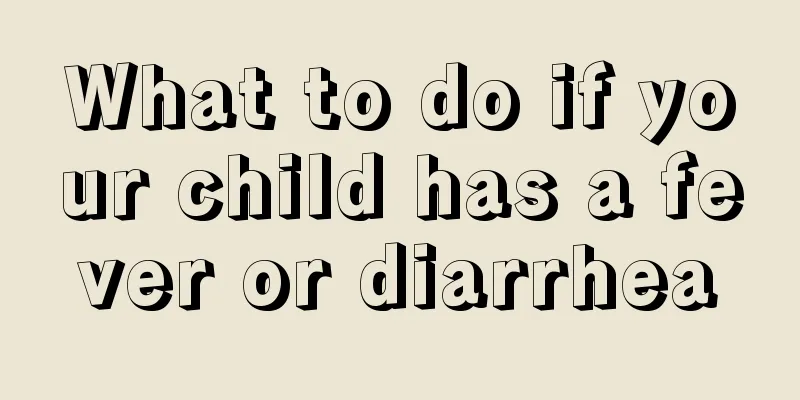One month old baby vomiting

|
In life, whether it is bottle feeding or breastfeeding, babies will swallow some air during feeding. Since the baby's stomach and intestines are not fully developed, it is easy to cause spitting up. Most babies' spitting up is normal, and parents don't have to worry too much, but parents must learn to observe. Some spitting up is abnormal. What is the matter with the one-month-old baby's jet spitting up? Is it normal for babies to spit up milk in a spraying manner? Spitting up is a common phenomenon in newborns. To determine whether it is normal for a newborn to spit up milk, you first need to figure out whether the baby is spitting up milk pathologically or physiologically. Pathological spitting up milk is an abnormal phenomenon, while physiological spitting up milk is a normal phenomenon. The amount of pathological spitting up is relatively large and may occur shortly after feeding or half an hour later. Before spitting up, the child will open his mouth and stretch his neck with an expression of pain and discomfort. Physiological regurgitation of milk is small in amount and often occurs right after feeding, and usually stops after one or two mouthfuls. However, the symptoms of physiological spitting up are generally mild and the amount of spitting up is not large. However, if the baby is sick, he may spit up in the form of jets, and it will happen more and more frequently. This is a sign that the baby is sick, mothers should never ignore it. How to deal with the baby spitting up milk Physiological vomiting itself is not a very urgent phenomenon, but when vomiting, the milk is likely to be accidentally inhaled into the trachea, causing the baby to choke, which requires attention. Tracheal obstruction can cause hypoxia in the baby and even endanger the baby's life. When the baby vomits violently or chokes on milk, mothers should deal with it in time. 1. Turn your baby to one side to prevent vomit from backing up. Be sure to clean the milk in your baby's mouth and nasal cavity to prevent the baby from inhaling these impurities when breathing again. Mothers can carry small handkerchiefs, small towels, cotton swabs and other cleaning items with them to be prepared. 2. Pat your baby's back. When vomiting milk, mothers should pay attention to the baby's complexion. If the baby's face turns purple or there are symptoms of shortness of breath, it is very likely that the vomit has choked the trachea. At this time, you must immediately pat the baby's back to make them cough it out. The effect will be just right if you let the baby lie prone and pat his back. Mothers can let the baby lie prone on the bed or on some hard objects and pat him. 3. Pinch the soles of your baby’s feet. There are many acupuncture points and nerve reflex areas on the soles of the feet. Pinching the soles of the feet hard can stimulate the baby's consciousness, making the baby feel pain and breathe hard. This is a last resort method. If color appears on the baby's face, the crying becomes louder and the baby can breathe deeply, then there should be nothing serious. If not, take your baby to the hospital immediately. |
<<: Baby vomits yellow-green mucus
>>: Why does a one-year-old baby spit up milk?
Recommend
Treatment of stomatitis in children
Stomatitis is relatively common in children in li...
Causes of hair loss in newborns
Anyway, after giving birth, young mothers are ver...
How to treat children with cold, fever and convulsions
Many mothers have found that their children will ...
Causes of autism
From a professional medical perspective, autism i...
Why does a child cough up yellow phlegm?
The problem of children coughing up yellow sputum...
Symptoms of heat and cold in children
Heat cold is also called heat flu. This symptom i...
How to make your child’s skin whiter?
Many children like to play outside, which often c...
What to do if your child has a picky eater
Children nowadays live a very happy life. They no...
What diseases does the baby's sleep sound represent?
Many parents who take care of their babies will f...
What should I do if my baby coughs? These tips are worth a try
Baby cough is a relatively common disease, mainly...
When do primary molars replace?
As we all know, when children reach a certain age...
What to do if your newborn baby has diarrhea
A problem discovered, but when encountering this ...
What to do if your baby is irritable due to teething?
Many parents will find that their babies are alwa...
What are the reasons why babies sweat a lot when sleeping?
The baby's health affects the entire family. ...
What happens if a child suddenly has diarrhea during breastfeeding?
We know that the body of a newborn baby is very s...









